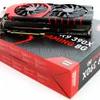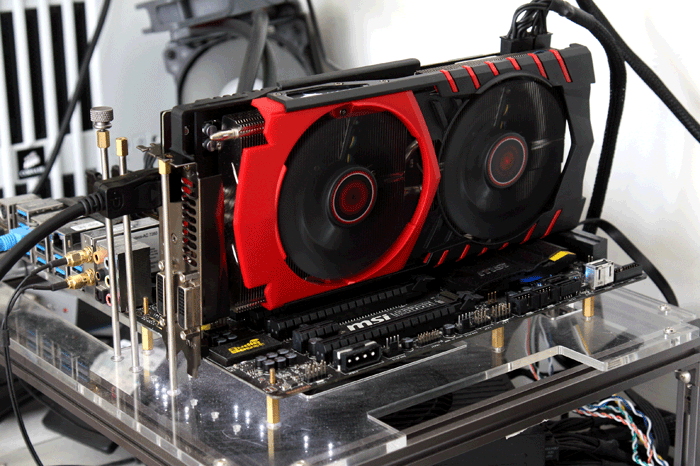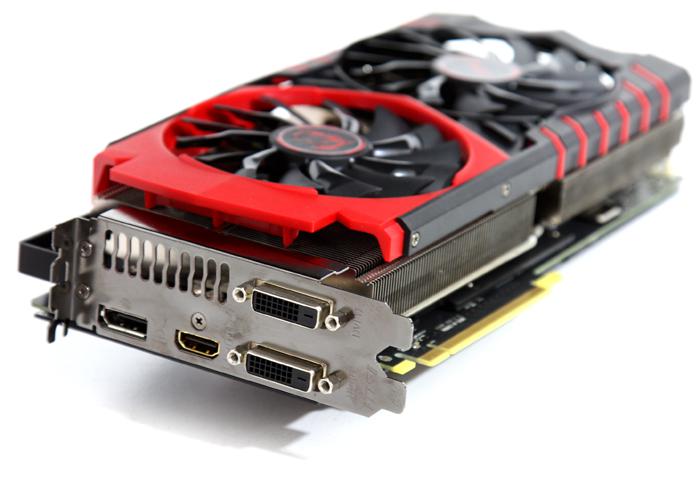Final Words & Conclusion
Final Words & Conclusion
The 'new' Radeon R9 390X is an interesting release alright. The Hawaii, or Grenada GPU as AMD likes to call it now, is pretty much the same GPU used in the 290 series with the same thermal characteristics, the same number of shader processors and, well, same everything. It is however the latest iteration of the ASIC that allows for slightly higher clocks overall. The differences are to be found merely in the GPU clock frequency which is up 50 MHz over reference and for the board partners mostly that will be another 50 MHz. The memory is clocked faster at an effective data-rate of 6 GHz. The most substantial noticeable gain is a move from 4 towards 8 GB of graphics memory. We very much doubt the benefits from the extra 4GB, the number of scenarios where you will pass 4GB is extremely limited. Other than that the changes from the board partners are maybe a new PCB and cooling. The MSI Radeon R9-390X Gaming 8G OC is lovely in many ways, has great looks, albeit a little bit bulky, it is relatively silent and offers pretty decent temps. All that combined with its overall performance makes it an interesting graphics card. The Twinfrozr V cooling is a well designed concept that gets the most out of the card alright.
Cooling & Noise Levels
The reference Hawaii GPU cooled products in the 290 reference series were to be considered really average at 95 Degrees C, the TwinFrozr V cooler does make a significant difference. This triple-slot design simply cools great, expect to hover at the 75 Degrees C marker depending on the airflow inside your system and the ambient temperature. The PCB is customized and you will only see MSI's components based on their 'Military class', lovely. Two subtle and silent fans in all black make this a good looking package alright. Great looking and very sturdy I must state as well, there is a metal plate at the top and backside of the card so the card cannot bend when seated horizontally in the PC. The noise levels are fine really. You can hear a bit of airflow, but that's it.
Power consumption
Power consumption is not bad but again not good either. The card is rated by us having roughly a 260 Watt peak power consumption (average is lower). That is OK, and could have been worse. I think enthusiast consumers at this performance level will not mind that much about the power draw and be forgiving. That TDP will make running multi-GPU solutions a bit more complicated. With two cards we think an 800~900 Watt PSU would be sufficient. So yeah, it's not great to have a GPU consuming that much power, but it could have been a lot worse.
Performance & drivers
Any Radeon R9 390X in most scenarios will be performing roughly at GeForce GTX 980 and Titan like performance, if priced right that is a pretty okay position to be in. Performance wise all modern games up-to 2560x1440 will run pretty good, and that is at the good image quality settings. For Ultra HD the 8 GB comes in handy, then again one card is not powerful enough to drive that resolution for gaming with high image quality settings and proper AA levels. What I am trying to say is that the 8GB graphics memory is nice and welcome, but might be a little irrelevant for most end-users while you do pay a price premium for it.
Drivers then, I decided I MUST make a comment on them. My main concern with the 290 and 390 series products are not so much the hardware and the performance the GPU can deliver, no, my main concern is proper driver support. For the past year AMD's driver support has been sub-par, and that's the honest truth. WHQL driver releases are slow and often the Beta releases are released too late. A good example here was the recently released 'The Witcher 3', it took AMD four weeks before they released a driver that enabled Crossfire support. This is a problem that is hindering and bothering the end-users, AMD needs to step up their game and release 0-day driver releases with at the very least AAA rated titles. As hey, you want to play that game at launch day without the worry that your graphics card isn't optimized or multi-GPU enabled.
Overclocking
Overclocking then, not bad at all. I mean the card is already factory overclocked for you and you get to add a little extra, but sure, it's not heaps alright. You can reach roughly 1200 MHz on the GPU stable, though that was the best we could reach. The memory can be clocked to 6600 MHz (effective). Overall that brings the card another 5, maybe 10% performance when compared to reference clock frequencies depending on game title/resolution. It is a reasonable tweak.
Concluding
While we like what MSI is offering, we do have mixed feelings about AMD re-spinning GPUs on this scale. It's not just AMD though, Nvidia as well - yet not to this extent. Honestly I do not know how long both AMD & Nvidia can get away with it, in the end the likelihood of people already owning a product based on old tech, in this case Hawaii, is substantial. So why upgrade if you already own a near similar product? And it's that sentiment that can spiral down their graphics card sales significantly. The opposing fact remains we also need to weigh in the fabrication process issues, 20nm manufacturing nodes have failed. The industry is moving forward to 14nm. And until that happens, where fabrication node GPU wise is yielding properly, we might as well get used to this I guess. So I understand the respins and the reasoning behind it, I'm just not sure how the end-users will benefit from it.
For the 390X, the differences in-between the 290 series and the product tested today are rather small. Let's also not forget that there already have been 8GB R9 290X graphics cards on the market for almost a year. The extra 50 MHz on the GPU isn't going to move mountains and the extra kick in bandwidth on the memory isn't going to make the biggest difference either, as the card already had plenty of bandwidth. So from that point of view, I think the 390 series is going to be a hard sell. Everybody that has a preference for team red already has a R9 series 290 card, as such the one big difference remains to be the extra 4GB of memory, and yeah, here again I feel that it is not gonna make a big difference for most people. But perhaps I am wrong, who knows.
If you allow me to focus on the AIB for a moment, MSI did a great job with the Radeon R9-390X Gaming 8G OC. It is a fantastic looking product that has all variables right. It offers very decent cooling temperatures for a Hawaii/Grenada based GPU, okay noise levels, nice looks and a small factory overclock. While we like the total of 8 GB graphics memory, 4 GB really was already sufficient.
So then, 290X or 390X? Realistically, you need to see what the prices will do, as the rest is irrelevant. You can tweak any 290X close to the 390X performance wise, the faster memory won't make a big difference as the 290X already had a ton of memory bandwidth, and then the only thing that remains is the bump from 4GB towards 8GB of graphics memory. As stated, that is not going to make a significant enough difference for the majority of you guys either. So pricing will be relevant until the 290 series are phased out and a 4GB 290X at the monent will be nearly 100 EURO cheaper opposed to the 8GB 390X. MSI has a great build at hand with their gaming edition card, a little bulky maybe, but it ticks all the right boxes and as such can be recommended if you are in the market for a product like this. The MSI Radeon R9-390X Gaming 8G OC is recommended and approved by Guru3D.com if you are upgrading from say the 7800 or 7900 series, as that would make sense. But pricing wise, be on the lookout for good deals on the 290 series.
Recommended Downloads
Sign up to receive a notice when we publish a new article
Or go back to Guru3D's front page




